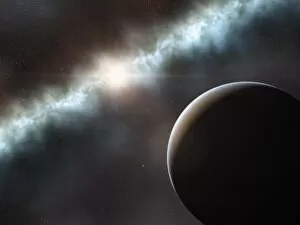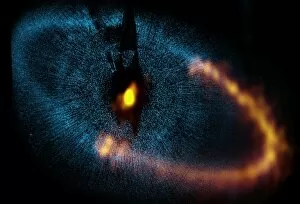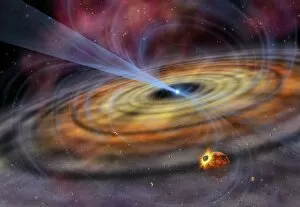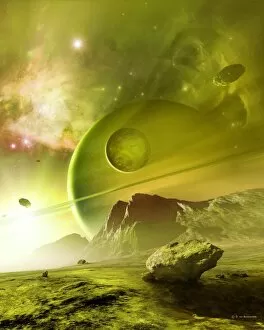Protoplanetary Collection
"Unveiling the Mysteries of Protoplanetary Systems: A Glimpse into Celestial Birthplaces" Rocky debris swirling around Vega
All Professionally Made to Order for Quick Shipping
"Unveiling the Mysteries of Protoplanetary Systems: A Glimpse into Celestial Birthplaces" Rocky debris swirling around Vega, a tantalizing glimpse into the birth of planets. (Rocky debris around Vega, artwork C016 / 9714) Planetary dust ring changes reveal the intricate dance of celestial bodies in their early stages. (Planetary dust ring changes, artwork C015 / 0803) Witnessing the evolution of planetary dust rings as they transform and shape future worlds. Artwork C015 / 0804) Exploring the T Cha system and its mesmerizing dust ring, shedding light on planet formation processes. (T Cha system and dust ring, artwork C014 / 5045) ALMA's captivating image captures Fomalhaut's majestic dust ring - a cosmic masterpiece in progress. (Fomalhaut dust ring, ALMA image C014 / 5044) Pulsar planetary disc artistry takes us on an imaginative journey through distant realms teeming with potential life forms. Reliving the awe-inspiring moment when our Moon took shape amidst cosmic chaos - Formation of the Moon revealed. (Formation of the Moon, artwork C016 / 5353) Delving deeper into lunar origins - Formation of the Moon depicted in stunning detail. Artwork C016 / 5352) Earth's formation unfolds like a symphony orchestrated by celestial forces – a testament to our remarkable existence. Gas giant encircling a young star hints at vast possibilities within protoplanetary systems – new worlds waiting to be born. Exploring Orion nebula unveils hidden treasures – planets emerging from stellar nurseries like jewels adorning velvet skies. Astounding revelations from Orion nebula showcase nature's celestial craftsmanship – planets taking shape in cosmic cradles.












